- Bernard Preston homepage
- Starch
- Food As Medicine
Food as medicine
Food as medicine is the new buzzword as researchers find that type-2 diabetes can be put completely into remission by dietary interventions alone[1].
Or is this really just a very ancient concept going back to Hippocrates, the father of Western healthcare? More than two thousand years ago he called for food to be used as medicine as the first port of call.
Researchers point out that in the US 1.4 million adults are every year newly diagnosed with type-2 diabetes. And that most of them could achieve complete remission by a change of lifestyle alone; dietary interventions and short walks after starchy meals.
Remission is defined as normal glucose levels without any diabetes medicine.
You can achieve remission through lifestyle.
- Prof Tim Garvey, director of the Diabetes Research Centre, University of Alabama
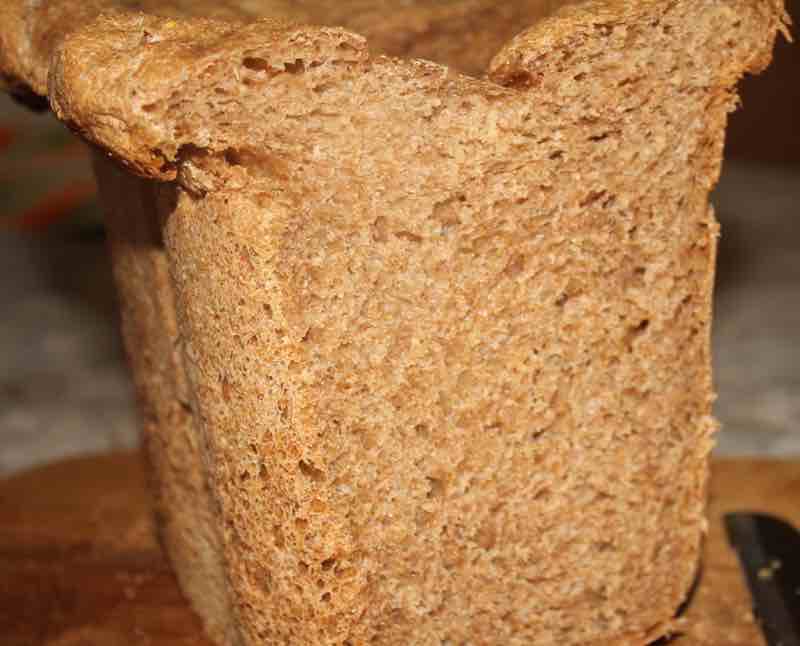 "Real bread" made with 100% flour.
"Real bread" made with 100% flour.Everyone really but certainly those suffering from diabetes should not eat refined grains. They are highly glycemic; be it in commercial bread, pasta or cakes.
Whole grains on the other hand are protective; and sourdough is king.
This is great news for those suffering from diabetes. It means not having to inject themselves or take medicines that are expensive; and have serious side-effects of their own.
Gliptons for example are a class of drugs that lower blood glucose in diabetics; side-effects include joint pain, swelling of the heart muscle and pancreatitis. Instead we can use exercise and food as medicine.
Diabetes has a high degree of mortality; the inflammation of the lining of capillaries caused by chronically raised blood glucose affects the circulation to every cell in the body. In particular the threat of heart disease and stroke soars in those suffering from insulin-resistance; but it can be completely reversed without medication.
Patient resistance
Of concern is the resistance of patients to make these lifestyle changes, choosing rather to stabilise their blood-glucose with medical interventions. Researchers again confirm that neither oral drugs nor insulin can bring about remission; they are simply palliative.
Are we addicted to refined carbs or is it simply habit? We get up in the morning, add sugar to our coffee and quickly swallow a bowl of highly glycemic cereal; providing zero satiety so our bodies demand colas and cookies by 11 o'clock.
Added to that we would commonly move immediately to the car and a desk-bound job; the inflammation associated with chronically raised blood glucose can be expected within a decade and full blown diabetes after twenty years.
What will it take to turn this lifestyle around? And will we do it before the stroke or only afterwards?
Equally there is patient resistance to medication for weight loss; the side-effects are awful and the cost abominable.
"Real-world estimates for GLP-1 receptor agonists discontinuation is in the range of 50 to 75% at 12 months.
While treatment with GLP-1 RAs leads to many health benefits, trials of discontinuation demonstrated rapid regain of weight and worsening of cardiometabolic parameters after stopping semaglutide or tirzepatide.
Moreover, lean muscle mass lost while receiving GLP-1 RA therapy may not be regained after discontinuation, producing adverse changes in body composition and increased risk of sarcopenia and frailty."
- JAMA Network
Whole foods
It may appear cynical but it is apparent that food companies are hell-bent on extracting the best parts from grains in particular; and then selling the vitamins, minerals and phytonutrients to us at fifteen times the price.
In South Africa 100% whole-grain grits costs R4/kg direct from the farmer. Fresh corn on the cob is around R20 per kilogramme.
But highly-refined cornflakes from which most of the nutrients have been extracted cost R80/kg.
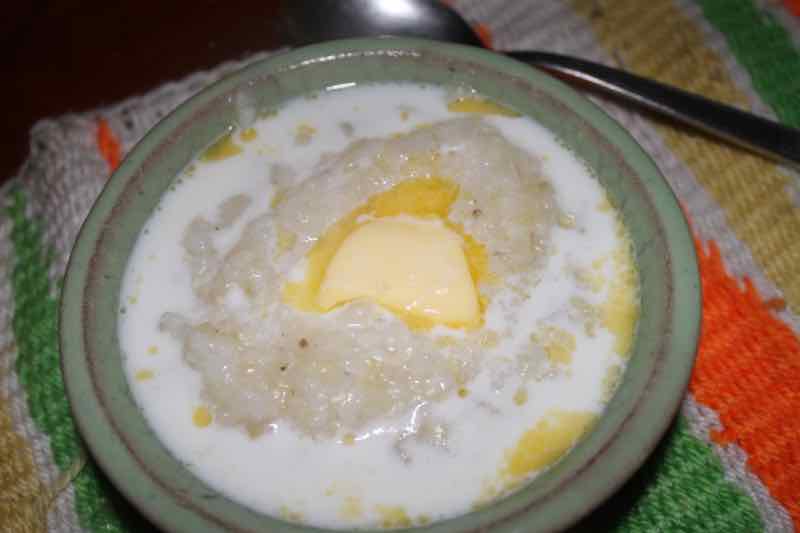 US$1 per kg, R4/kg in RSA.
US$1 per kg, R4/kg in RSA.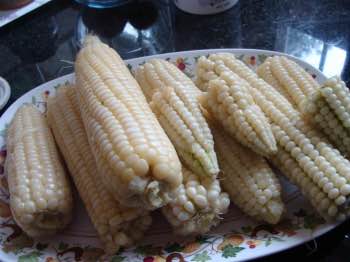 $1.15 per cob, 250g of corn. R5 in South Africa.
$1.15 per cob, 250g of corn. R5 in South Africa.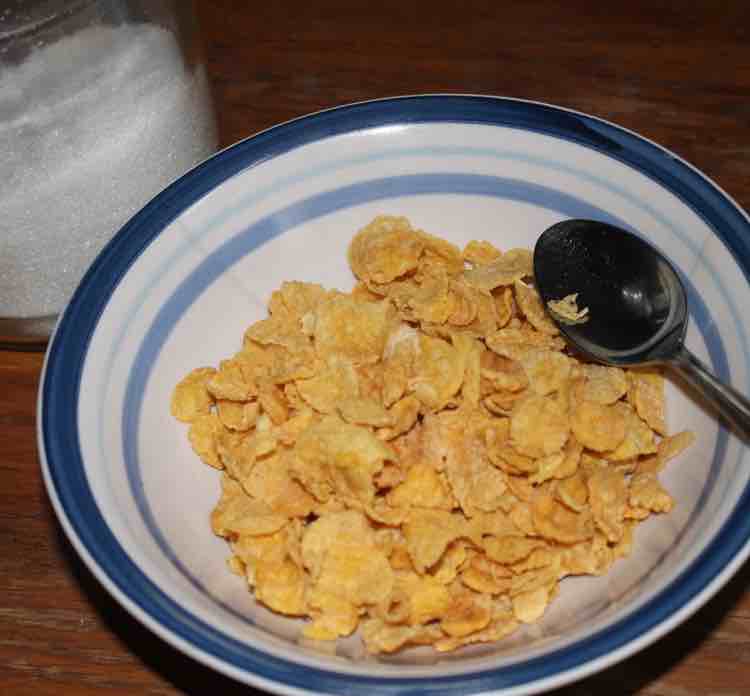 $6,30/kg in the USA. R80 in SA.
$6,30/kg in the USA. R80 in SA.The strategy of researchers who found that type-2 diabetes can be reversed was centred on whole foods. That means turning one's back for ever on cornflakes for breakfast and enjoying perhaps a small bowl of wholegrain grits instead.
Stone ground grits with cream and a little natural honey is a delight; the zeaxanthin also gives protection against age-onset macular degeneration.
Against all expectation natural honey actually lowers the fasting blood glucose of diabetics and improves their lipid profiles; it certainly is one small part of food as medicine.
Commercial honey has exactly the opposite effect.
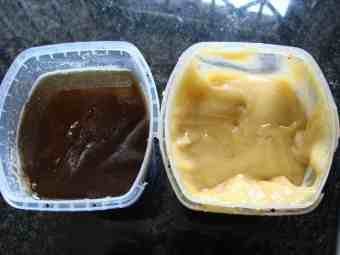
These are both natural honeys; in moderation they are good for diabetics, helping to lower blood glucose[4].
Plant-based
Researchers have found that diabetics can achieve complete remission if they return to a plant-based diet. That should not be construed to mean becoming a vegetarian but the inclusion of a great many fruits, salads and other garden produce; legumes, small amounts of meat and dairy for protein too.
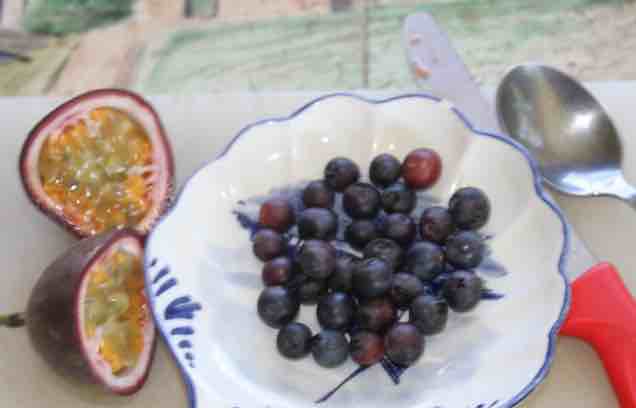
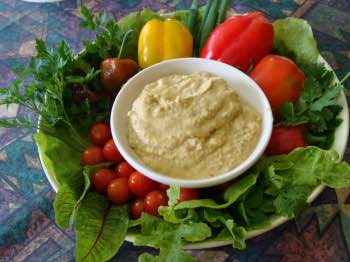
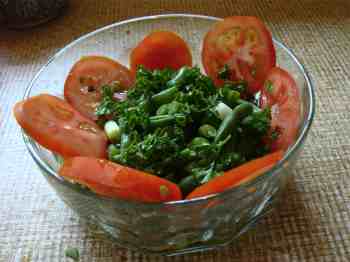
Hummus is a plant-based protein easily made at home in just five minutes[8]; it contains all the essential amino acids.
Very low carbohydrate diet?
"Most patients diagnosed with type 2 diabetes are not told of the low carb option. Instead it's all about weight loss. But you can dramatically improve blood glucose in just one day by choosing reduced starch. Make that lifestyle change the first and best choice in T2DM."
- Dr Penelope Figree, MD
There is a high level of consensus that very low carbohydrate diets increase the risk of significant adverse events; simply because that means foregoing the protection afforded by the fibre and phytonutrients found in fruit, whole grains and legumes.
So instead choose reduced "refined" starches; that is the best lifestyle choice in T2DM.
Very low was not defined but probably would mean less than 20g of carbohydrate per day; roughly that in one slice of bread. This would put a patient into ketosis, not undesirable but should be under the careful management of a clinician skilled in prescribing food as medicine.
But simply cutting out all refined carbs for ever requires no supervision whatsoever; you can do it quite safely under your own steam.
The ketogenic diets have their merits, in particular removing all refined carbs and sugar from our food. However we do not support them since that also means foregoing the protection afforded by many important phytonutrients found in whole grains, starches like butternut and legumes.
For limited periods or say one week in the month, they are perhaps justified by the significant weight loss; as a permanent lifestyle change ketogenic diets are dangerous.
"Lifestyle modification underlies all successful diabetes therapy."
- Clinical Endocrinology algorithm
Time restricted fasting
Fasting in one of its many forms is recommended. The simplest is just to make a longer period between meals; the exact opposite of constant snacking.
So time-restricted fasting for example would mean eating dinner by 6pm and enjoying your grits or steel cut oats after 8am; and preferably even later. A 15 hour gap is ideal.
The longevity diet recommends what they call "fasting-mimicking." Plant based meals, very low in refined carbs and protein but higher in fat, trick the body into thinking that we are going without food apparently.
They specifically recommend however that the elderly should not go on a low protein diet; it is associated with loss of muscle mass and frailty.
This page discussing a healthy diet for prediabetes also considers the latest research on how to diagnose the condition; luckily one little prick of the finger and the use of a glucometer. The consensus is that it's best treated with lifestyle modification not medication. Poorly managed it frequently progresses to the full blown disease.
Exercise
A fifteen minute walk after lunch is recommended; in fact that should be the case after any starchy meal. A return to hiking as a pastime would do one a power of good too.
Of course swimming, cycling and other forms of exercise would be just as good.
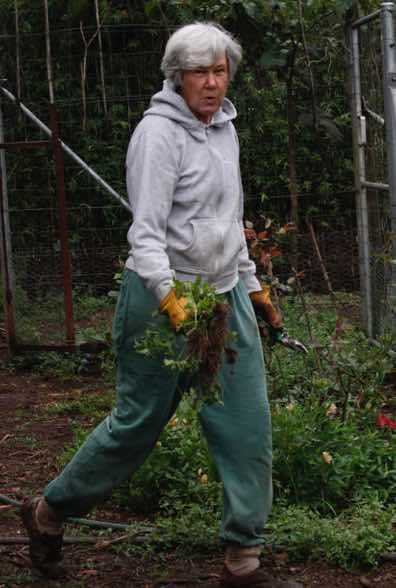


"Walking significantly decreased glycosylated haemoglobin HbA1c by 0.5%[9].
0.5% is very significant. By walking after starchy meals you can lower your HbA1c from 6.9 to 6.4pc; it will mean you are no longer classified as being diabetic.
However researchers are adamant; the walking has to be supervised. Most of us are not disciplined enough to do it without someone to hold our hand. How determined are you to get off all diabetes medication? The risk of stroke, heart attack and blindness is frightening; dementia too.
There is another reason for walking when going on any weight-loss programme. One quarter of the pounds lost will be from muscle mass; unless you counter this with exercise your body will become weaker as you shed that unwanted flab.
Recommended meal plan
For breakfast half a cup of a whole grain cereal such as cooked steel-cut oats or grits is recommended; fruit like an apple or blueberries and some vegetable protein.
Our recommendation is Eggs Florentine, perhaps including some green beans. On half a slice of 100% wholemeal toast is an option, if you can find it but that is unlikely unless you bake it yourself; you won't see it in supermarkets.
Eggs are out, or are they in? They are one of the few sources of vitamin B12; a deficiency causes a particularly pernicious form of anaemia.
The usual commercial breakfast never tasted as good as this food as medicine.
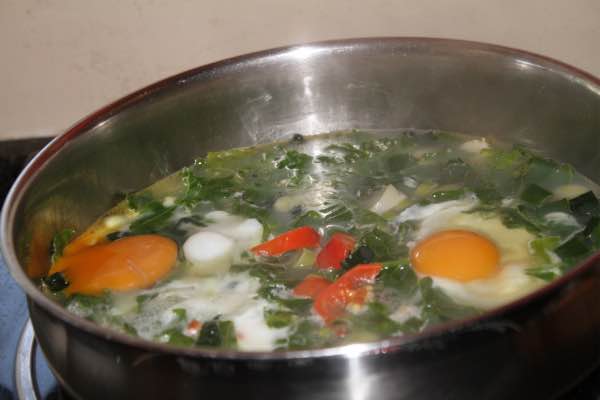
For lunch a vegetable soup and a dark-green leafy salad is recommended with many different coloured foods. An added protein could be some legumes like hummus; a small piece of cheese, salmon steak or a boiled egg.
For a starch new potatoes or one slice of artisan sourdough bread would be good examples of whole foods as medicine; corn on the cob too.
Make lunch your main meal.
Dine like a pauper not later than 6pm. Dark green leafy vegetables like broccoli would be ideal with a small helping of starch; perhaps a sweet potato, butternut or pumpkin. Fish or free-range chicken would be perfect, with red meat perhaps once or twice a week. Legumes like beans or peas would be excellent alternatives for protein of plant origin.
Drink before dinner
It's important to have some liquid before dinner; rather than a beer choose a herb tea of sorts. This oats milk infusion is one of my favourites but there are dozens to choose from.
The maltose in your favourite lager or ale alas has a very high glycemic index; keep it for occasional get togethers with friends and family.
Half a glass of wine, spirit or even a little dry mead with your meal is an option rather than before dinner; the alcohol is rapidly absorbed making you tipsy and being turned in the liver into triglycerides.
One step at a time
Medication for weight loss is extremely expensive; for the majority it is simply unaffordable.
Instead cutting out sugar and refined carbs would mean money jingling in your pocket.
"Out of pocket costs are an important driver of discontinuation of GLP1 receptor agonists. In a study of adults with diabetes, a monthly co-payment of $50 or more was associated with significantly lower odds of adherence at 1 year; for some it is over five hundred dollars. There is significant potential for rebound harm."
Using food as medicine means you are needing these nutrients daily just as you would require metformin or insulin. Making such a drastic change as this is likely to be very difficult.
Our recommendation is to take it one step at a time; choose some of the following and don't add more until you have been completely successful incorporating them. This is for life.
In no particular order of merit, these are the steps to consider; choose the easiest first.
- Take a short walk after every starchy meal.
- Add a variety of dark-green leafy vegetables, both as a salad and cooked.
- Cut back radically on refined carbs; that will be very difficult but possibly the most important.
- Add whole grains like corn on the cob and brown rice to your meal plans.
- If you're a bread lover, consider baking your own with 100% wholemeal flour[3].
- Add a small portion of the pumpkin family to your platter several times a week[2].
- Avoid all potatoes from cold-storage; and white rice too.
- Restrict red meat to just once or twice a week.
- Instead add more legumes like chickpeas, lentils and green beans daily.
- Look to several coloured fruits daily, particularly berries.
- Drink absolutely no colas with sugar or non-nutritive sweeteners; more water and herb teas.
High and holy days
Work hard at food as medicine when you are at home. On high and holy days, don't binge but go out and enjoy yourself.
Food as medicine
Food as medicine is increasingly finding its way into mainline care. Success in entirely dependent on patients who are willing to ring in these intensive changes and are determined to adhere to them; it's a whole new lifestyle that will endure for ever.
The longer you have been diabetic the less likely you will be able to achieve full remission; however your blood glucose would be far more stable when choosing whole foods, mostly of plant origin. You will need much less medication; perhaps even half the insulin within a few days.
Choose life; look to food as medicine over drugs for complete remission. It will be a whole new way of living.
Quite soon you will find that whole foods taste much better than commercial meals.
Two nutrients from the pumpkin family, trigonelline and nicotinic acid help to keep blood glucose down[2].
Vitamin B6 is essential to the stabilisation of blood glucose owing to its role in the break down of amino acids.
"New evidence suggests that patients taking long term nonsteroidal anti-inflammatory drugs, including low dose aspirin are relatively more susceptible to Helicobacter pylori infection."
- David A. Johnson, MD
Bee pollen
Bee pollen has been shown to have many beneficial effects. One of them is that it ameliorates raised blood sugar. It does this by slowing the action of alpha-glucosidase, the enzyme in the gut that breaks down carbs[6].
It is now well established that natural honey consumption but not the commercialised product found in supermarkets, actually lowers fasting blood glucose; this is probably due to the action of pollens remaining in the unprocessed nectar.
Diabetic retinopathy
The prevalence of blindness from diabetes has continued to soar in the world in the last twenty years; with nearly two million Americans for example now affected. It's reaching young and old alike.
Four out of ten adults, forty and older suffering from diabetes have retinopathy[7].
Wherever the typical "industrial diet" food is consumed diabetes flourishes; that's the typical grocery store meal. Refining of grains is to a great extent the cause; millers take corn and wheat for example, extract the best parts and sell us the highly glycemic flour.
Polished rice, white bread and refined maizemeal are the villains of the piece; diabetes retinopathy. Using food as medicine means eschewing these products that masquerade as the real deal; for ever.
They will fill a hole in a hungry stomach but little else; they provide no satiety. They should not be considered food. Nearly forty million Americans are diabetic. It's little different in most of the world; one in ten adults.
Using food as medicine the majority of type-2 diabetics could get entirely off all drugs; would forsaking sugar and refined grains for ever really be a bridge too far?
Inflammation of raised blood glucose
Frequently raised blood glucose is highly inflammatory; and that is nearly half of all adults on the so-called "industrial diet" which most people eat. The chronic degenerative diseases associated with insulin resistance account for more deaths than viruses and bacteria.
We belong to the Order of Hippocrates; we use food as medicine.
"Let thy food be thy medicine, and medicine be thy food."
Hippocrates (460 - 370 BC)
Easy fast-food access
In sharp contrast to our recommendations above, new research in JAMA Oncology reveals that communities with easy access to fast food are 77% more likely to die from high levels of obesity-related cancer[5].
Living close to grocery stores and fast food outlets is dangerous.
"Of course, many patients do regain weight after bariatric surgery."
- Professor Tim Garvey
- How Diet Alone Can Achieve Remission in Diabetes @ Medscape.
- Pumpkin for diabetes.
- 100% wholmeal flour
- Effect of honey on cardiometabolic risk factors
- Association of Food Deserts and Food Swamps With Obesity-Related Cancer Mortality in the US
- Bee Pollen: Current Status and Therapeutic Potential
- Prevalence of Diabetic Retinopathy in the US in 2021
- Authentic hummus recipe
- Impact of Walking on Glycemic Control and Other Cardiovascular Risk Factors in Type 2 Diabetes
When browsing use right click and "Open Link in New Tab" or you may get a bad gateway signal.
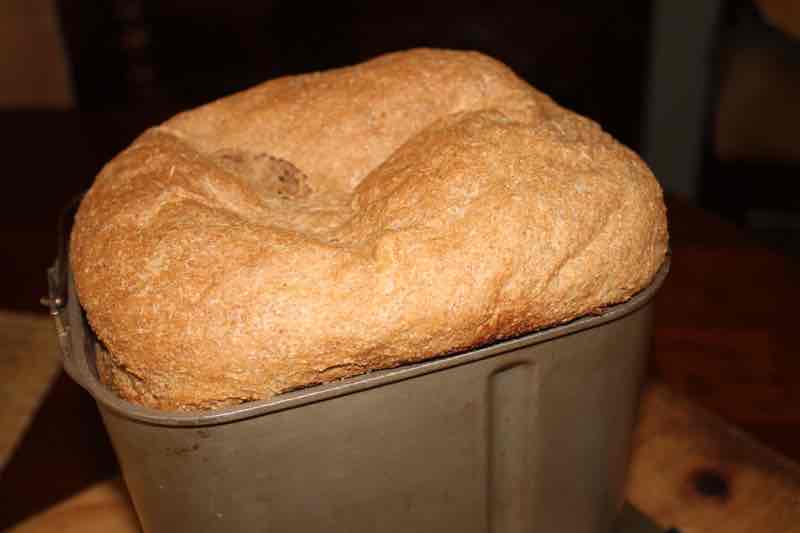 100pc wholemeal sourdough bread.
100pc wholemeal sourdough bread.Newsletter
Our newsletter is entitled "create a cyan zone" at your home, preserving both yourself and Mother Earth for future generations; and the family too, of course. We promise not to spam you with daily emails promoting various products. You may get an occasional nudge to buy one of my books.
Here are the back issues.
- Lifestyle and ideal body weight
- What are ultra-processed foods?
- Investing in long-term health
- Diseases from plastic exposure
- Intensive lifestyle management for obesity has limited value
- A world largely devoid of Parkinson's Disease
- The impact of friendly bacteria in the tum on the prevention of cancer
- There's a hole in the bucket
- Everyone is talking about weight loss drugs
- Pull the sweet tooth
- If you suffer from heartburn plant a susu
- Refined maize meal and stunting
- Should agriculture and industry get priority for water and electricity?
- Nature is calling
- Mill your own flour
- Bake your own sourdough bread
- Microplastics from our water
- Alternative types of water storage
- Wear your clothes out
- Comfort foods
- Create a bee-friendly environment
- Go to bed slightly hungry
- Keep bees
- Blue zone folk are religious
- Reduce plastic waste
- Family is important
- What can go in compost?
- Grow broad beans for longevity
- Harvest and store sunshine
- Blue zone exercise
- Harvest and store your rainwater
- Create a cyan zone at your home
Did you find this page interesting? How about forwarding it to a friendly book or food junkie? Better still, a social media tick would help.
- Bernard Preston homepage
- Starch
- Food As Medicine
Address:
56 Groenekloof Rd,
Hilton, KZN
South Africa
Website:
https://www.bernard-preston.com